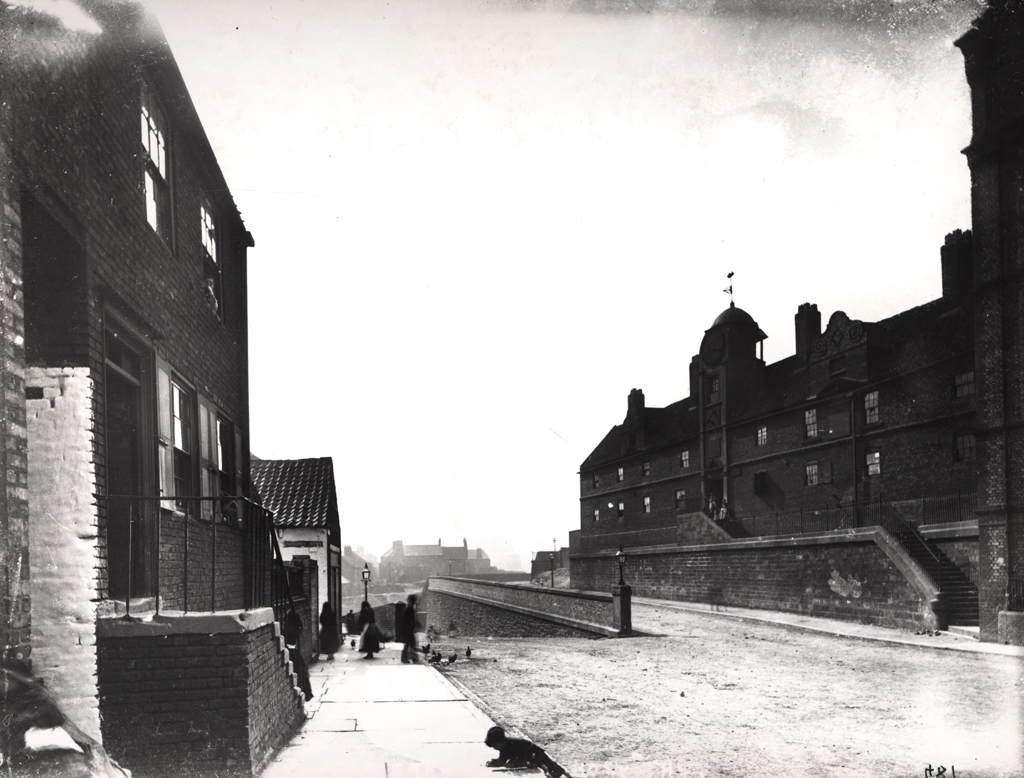
Newcastle
The Keelmen's Hospital
Last Updated:
1 Jun 2025
Newcastle
This is a
Almshouses
54.971443, -1.602296
Founded in
Current status is
Extant
Designer (if known):

Currently being renovated for housing
The Keelmen's Hospital is an incredible survivor, and is soon to benefit from a new lease of life courtesy of
the Tyne & Wear Building Preservation Trust.
Its history dates all the way back to the late 17th century. There was very little framework to support working families, not least those who lost the main breadwinner, if they lived in destitution or poverty. There was no welfare system, and charity was generally offered by the parish or the wider community. This is very much an example of the latter.
In 1700, the Keelmen petitioned to the town for a parcel of land to erect a hospital for their own, self funded. By hospital, really it meant an almshouse where the sick, destitute or widowed were provided accomodation and nourishment through a pot raised by fellow keelmen. The order granting this land was provided in the October of this year and construction was completed in 1701.
The costs were raised through a 4d levy, charged each time a keelman made a voyage which soon provided the £2000 required for its construction. It wasn't bog standard either as we can well see - it provided a relatively comfortable and respectable setting for those who had little else. As noted, widows and their children alongside the sickest of keelmen benefitted from the 54 rooms inside. The charitable fund continued until 1788, but from there an act was passed to establish a permanent means of funding. This also kept it repaired and maintained.
Of course it still wasn't all sunshine and rainbows. Life was still tough and this place provided sustenance rather than luxury. There are various accounts of newborn children being discarded in nearby sewers, sexual assault as well as the scene of grisly murders - Jane Jameson murdering her mother being the most well known. There were still 199 people living here in 1861.
It remained accomodation well into the 20th century, and was listed in the 1950s. In the 60s it raised further questions, and was mooted to be turned into a mens hostel but later ended up being student accomodation. In the past couple decades it saw further disuse, but will soon be converted into social housing. Very poetic, and brings it back to its underpinning cause.
Listing Description (if available)


We're crossing literal centuries on this entry, with these maps featuring Armstrong's Plan of 1769 and the Ordnance Survey Town Plan of 1896 - 130 years apart.
It's hard to really stress the evolution of Newcastle's East End. The fringes of the city were physically at the hospital in the 1760s, though the riverside sprawl had developed over a longer term given the industries. The areas of Battle Field and Shieldfield were scarely built on, and were actually used for sport and dog fighting. Great gardens covered the area from the wall to the Ouseburn with the odd mill dotted around too. However, across the next century large and overbearing tenements and industries would build over these gardens and became part of the great engine that was Newcastle upon Tyne. Baths, schools, churches, warehouses, factories and most other things you can think of cropped up by the end of the 19th century.

The City Road and Milk Market area were still heavily industrialised in the 1950s, with the Keelmans Hospital housing some of these workers and the least well off folk in the city. You'll see the long continental wharves lining the Tyne as well as once Europe's largest grain warehouse. Immediately next to the hospital was the Jubilee School which you can see on a shot below as well as a long gone maternity hospital. Many of these buildings do still survive though.

The Keelmen's Hospital in April 2025

City Road and the hospital in 1880, from a similar perspective to mine above.
Source: Newcastle Libraries

The Keelmens Hospital and the Jubilee School in the 1950s, with the Co-Operative warehouse in the foreground to provide perspective. The Barley Mow was also operating.
Source: Historic England
